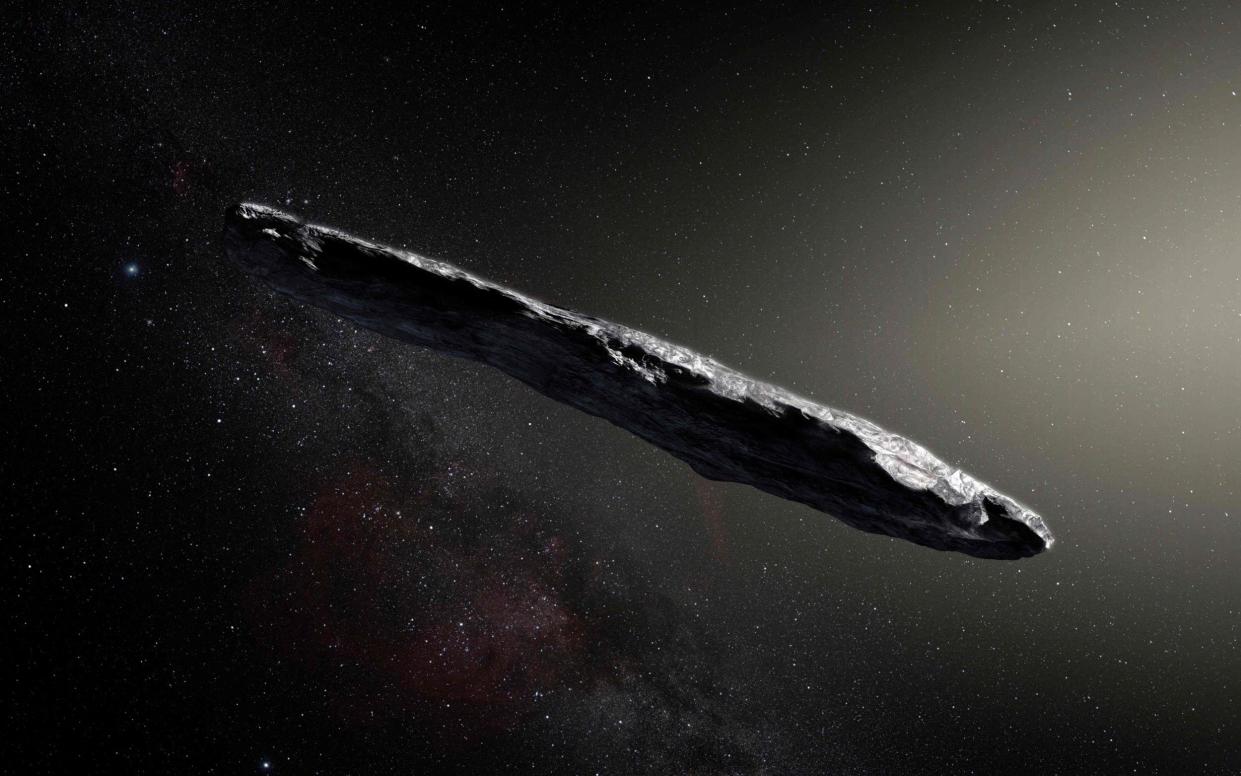Scientists solve mystery behind strange comet that some thought was alien spacecraft

When the mysterious comet 'Oumuamua passed through the solar system in 2017, its odd trajectory led some to speculate it might be an alien spacecraft.
The cigar-shaped space rock was accelerating away from the sun in a way that astronomers could not explain, and which appeared to suggest it had an internal power source.
Now scientists have found that the comet really was indeed self-propelled. Its course was being altered by the tiny push created as hydrogen gas spurted out of its icy surface, acting like a thruster.
“A comet travelling through the interstellar medium basically is getting cooked by cosmic radiation, forming hydrogen as a result,” said Jennifer Bergner, assistant professor of chemistry at University of California, Berkeley.
“Our thought was: If this was happening, could you actually trap it in the body, so that when it entered the solar system and it was warmed up, it would outgas that hydrogen?”
“Could that quantitatively produce the force that you need to explain the non-gravitational acceleration?”
Comets are icy rocks left over from the formation of the solar system 4.5 billion years ago and periodically approach the Sun.
When warmed by sunlight, they eject water and other molecules, producing a bright halo or coma and often tails of gas and dust.
But ‘Oumuamua had no coma or tail, so it appeared it was not releasing anything that could explain the strange acceleration.
Scientists began to look for another explanation, and Dr Bergner found experimental research suggesting that when ice comets are hit by high energy cosmic rays in space, it produces hydrogen that gets trapped within the ice.
If the comet then nears a warm body like the sun, the ice changes to a crystal structure, forcing the bubbles of hydrogen out and creating a thrust effect.
Although most icy comets would eject hydrogen in this way - a phenomenon known as outgassing - they are usually too big for the gas to have any impact on their course.
In contrast, ‘Oumuamua measures just 370ft, by 260ft by 62ft, so even a small spurt of gas could change its trajectory.
“For a comet several kilometres across, the outgassing would be from a really thin shell relative to the bulk of the object, so both compositionally and in terms of any acceleration, you wouldn't necessarily expect that to be a detectable effect,” added Dr Bergner.
“But because ‘Oumuamua was so small, we think that it actually produced sufficient force to power this acceleration.”
The baby comet was first spotted in October 2017 by astronomers at the University of Hawaii who gave it the name 1I/‘Oumuamua (pronounced oh MOO-uh MOO-uh), which is Hawaiian for “a messenger from afar arriving first”.
It was the first interstellar object aside from dust grains ever seen in our solar system. The research was published in the journal Nature.

